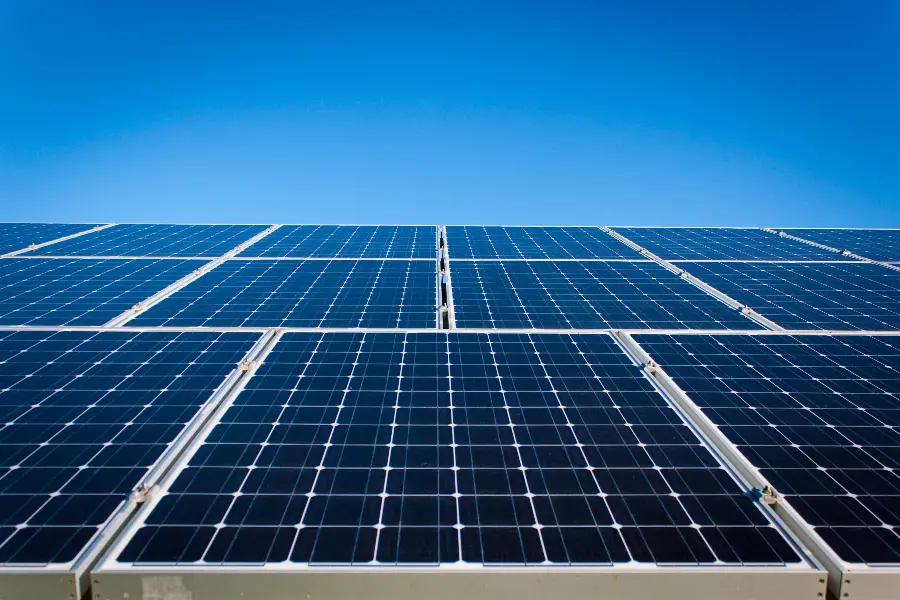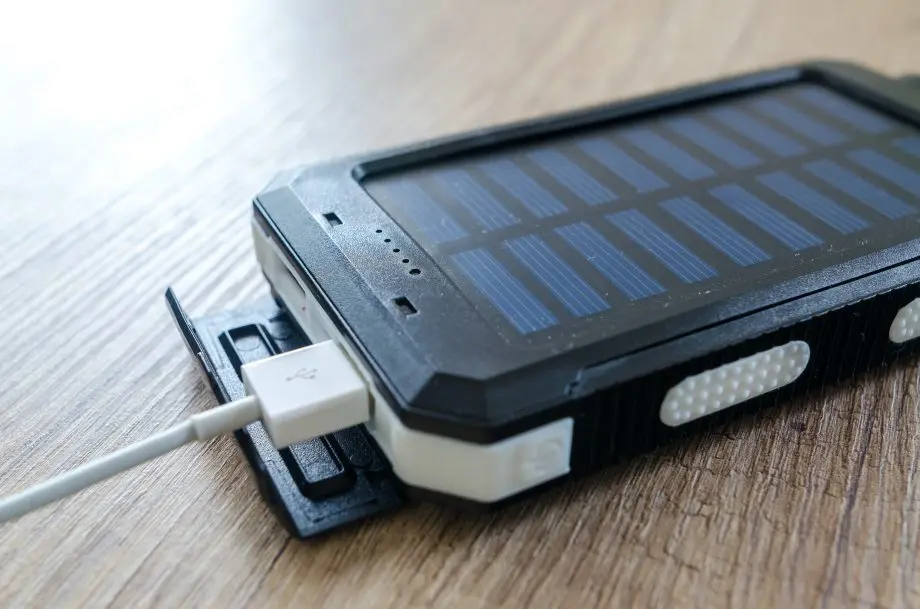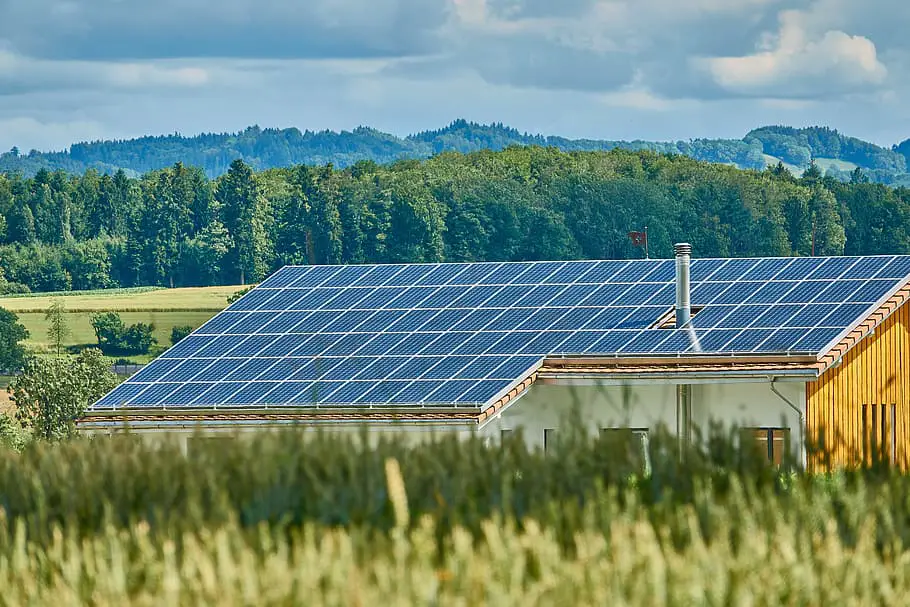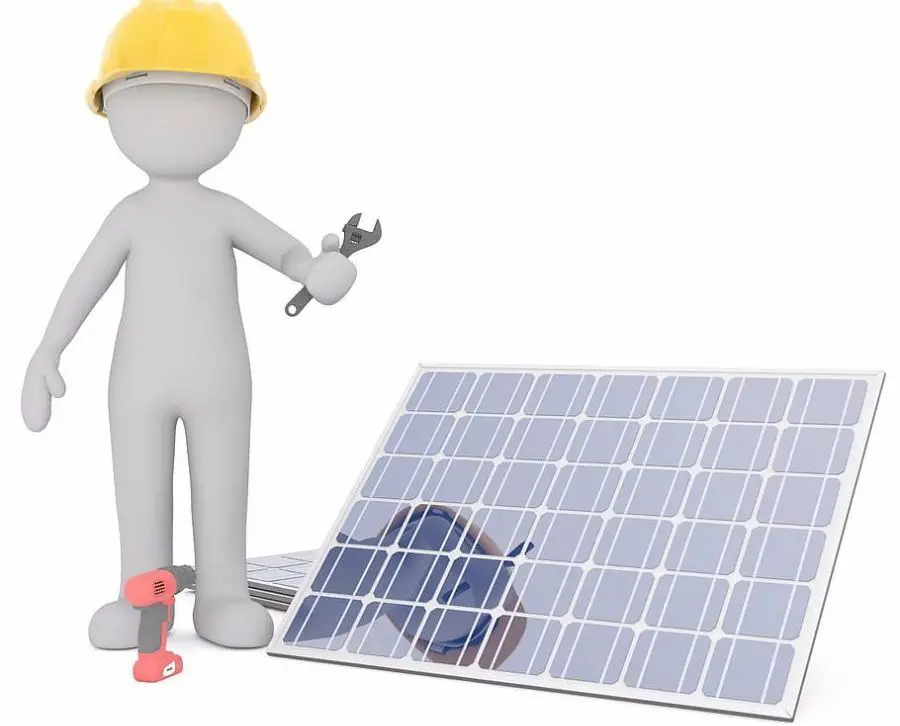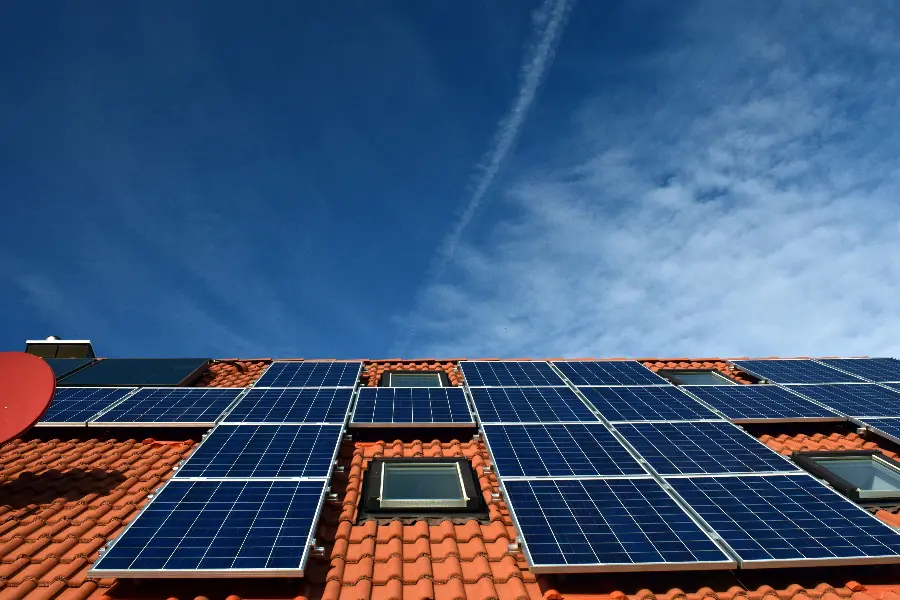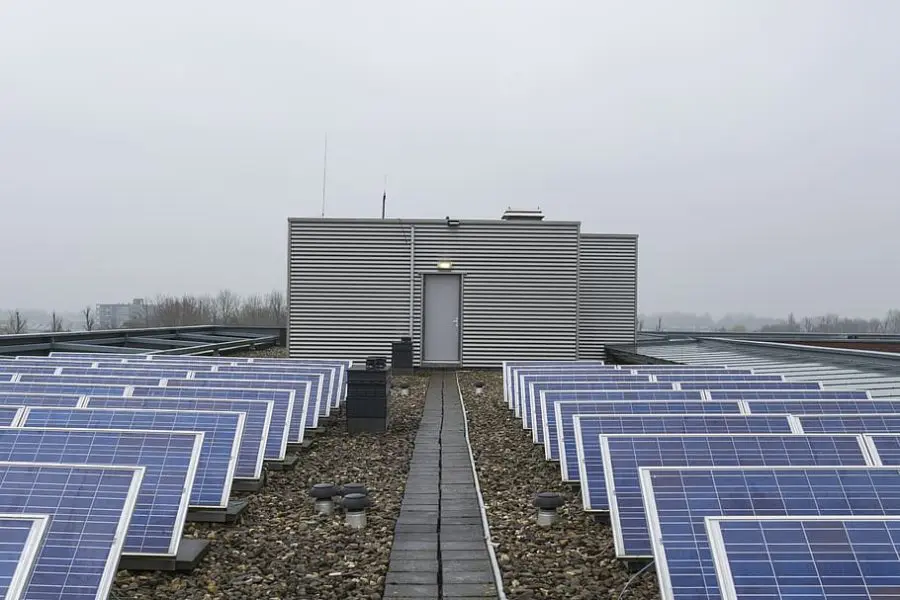
Unlock the power of the sun at home! Dive into Understanding Solar Power Battery Storage and learn how to harness clean, renewable energy efficiently.
Ever wondered how the sun’s rays can keep your lights on even after sunset?
Well, it’s all about understanding solar power battery storage. This incredible technology allows us to capture the sun’s energy during the day and use it when we need it most.
It’s like having your own personal slice of the sun, ready to power your home whenever you need it.
So, let’s dive in and uncover the magic behind solar power battery storage!
Understanding Solar Power Battery Storage
Welcome to a journey of discovery into the world of understanding solar power battery storage.
In this enlightening exploration, we’ll delve into the workings of solar power battery storage, the different types of solar batteries, and the numerous benefits they bring to our daily lives.
We’ll also navigate through the costs, efficiency, and how to choose the right solar battery for your needs.
From installation to future trends, and even some frequently asked questions, we’ve got it all covered.
So, buckle up and get ready to illuminate your knowledge about this fascinating aspect of renewable energy!
Brief Overview of Solar Power Battery Storage
Imagine having your own personal sun, ready to provide you with power whenever you need it.
That’s essentially what solar power battery storage is all about.
It’s a system that allows you to store the excess energy produced by your solar panels during the day, so you can use it later when the sun isn’t shining.
Think of it as a savings account for your solar energy. You deposit the energy you don’t use right away and withdraw it later when you need it.
It’s a simple concept, but the technology behind it is truly remarkable.
Importance and Benefits of Understanding Solar Power Battery Storage
Now, you might be wondering, Why should I bother understanding solar power battery storage?
Well, the benefits are more far-reaching than you might think. Firstly, it gives you greater energy independence.
You’re not as reliant on the grid, and you’re less affected by changes in electricity prices.
Plus, in the event of a power outage, you’ve got a backup power source ready to go.
Secondly, it’s a fantastic way to make the most of your solar panels.
Without a battery, any excess energy your panels produce is sent back to the grid.
But with a battery, you can store that energy and use it to power your home even when the sun goes down.
Lastly, understanding solar power battery storage is crucial because it’s the future of home energy.
As renewable energy becomes increasingly important, having a solid grasp of how we can store and use this energy effectively will be invaluable.
So, by understanding this technology, you’re not just equipping yourself for the future, you’re also taking a step towards a more sustainable world.
What is Solar Power Battery Storage?
Ready to dive deeper into the world of renewable energy?
Let’s start with the basics and answer the question: What exactly is solar power battery storage?
It might sound like a mouthful but don’t worry, we’ll break it down together, and by the end of this section, you’ll be able to explain it to your friends like a pro.
So, let’s turn our faces to the sun and start this enlightening journey!
Definition and Explanation of Solar Power Battery Storage
Solar power battery storage, in its simplest form, is like a bank for your solar energy.
But instead of money, you’re depositing the excess energy your solar panels generate during the day.
Here’s how it works: Your solar panels capture sunlight and convert it into electricity. This electricity is used to power your home.
But what happens if your panels produce more electricity than your home needs at that moment? That’s where the battery comes in.
Instead of letting that excess energy go to waste, it’s stored in your solar power battery.
Then, when the sun goes down and your panels aren’t producing electricity, you can withdraw the energy you stored earlier.
In essence, a solar power battery allows you to use solar energy whenever you need it, not just when the sun is shining.
It’s a way to ensure that none of the clean, renewable energy your panels produce goes to waste.
And that’s a win for both you and the environment!
How Does Solar Power Battery Storage Work?
Have you ever wondered how we can capture the sun’s energy and use it to power our homes, even when the sun isn’t shining?
It’s all thanks to solar power battery storage. But how does it work exactly?
Well, it’s a bit like magic, but with science! In this section, we’ll pull back the curtain and reveal the fascinating process that allows us to store solar energy and use it whenever we need it.
So, let’s roll up our sleeves and dive into the inner workings of solar power battery storage!
The Process of Storing Solar Energy in Batteries
The process of storing solar energy in batteries is a beautiful dance between the sun, your solar panels, and your battery.
It all starts with the sun shining down on your solar panels. These panels are made up of photovoltaic cells that convert sunlight into direct current (DC) electricity.
But here’s the thing: your home uses alternating current (AC) electricity, not DC.
So, this DC electricity needs to be converted into AC electricity before it can be used in your home. And that’s where the inverter comes in.
Once the electricity is in the right form, it’s used to power your home.
But what if your solar panels produce more electricity than your home needs at that moment?
That’s where the battery steps in. The excess electricity is sent to your battery, where it’s stored for later use.
When the sun goes down and your solar panels stop producing electricity, your battery takes over, supplying your home with the electricity it stored earlier in the day.
And just like that, you’ve got a 24/7 supply of solar energy!
The Role of Solar Panels and Inverters in This Process
Solar panels and inverters are the unsung heroes of solar power battery storage.
They each play a crucial role in the process of storing solar energy.
Solar panels are the first step in the process. They capture sunlight and convert it into DC electricity.
But they’re not just passive collectors. The photovoltaic cells in the panels are actively converting sunlight into electricity, making them the powerhouse of your solar energy system.
Inverters, on the other hand, are the bridge between your solar panels and your home.
They take the DC electricity from your panels and convert it into AC electricity, the kind your home can use.
Without inverters, the electricity your panels produce would be unusable.
Together, solar panels and inverters make it possible to capture, convert, and use solar energy in your home.
And when you add a battery to the mix, you’ve got a complete system that allows you to use solar energy anytime, day or night
Types of Solar Batteries
Just like there are different types of cars, there are also different types of solar batteries.
Each one has its own strengths and is suited to different needs. But don’t worry, you don’t need to be a battery expert to understand the basics.
In this section, we’ll introduce you to the main types of solar batteries: Lead Acid, Lithium-ion, and Saltwater.
We’ll explore what makes each one unique and why you might choose one over the others.
So, let’s get to know these power-packed players in the world of solar energy storage!
Lead Acid
Lead Acid batteries are like the granddaddies of the solar battery world. They’ve been around for a long time and are well-tested and reliable.
These batteries are often used in off-grid solar systems because of their high capacity and ability to deliver a lot of power at once.
They’re also generally more affordable than other types of solar batteries.
However, they do have a shorter lifespan and lower efficiency compared to some other types, and they require regular maintenance to keep them in good working order.
Lithium-ion
Lithium-ion batteries are the new kids on the block, and they’re quickly becoming the go-to choice for solar power battery storage.
They’re lighter and more compact than lead acid batteries, and they have a longer lifespan and higher efficiency.
Plus, they require little to no maintenance. However, all these benefits come with a higher price tag.
But if you’re looking for a long-term investment that will deliver reliable performance, lithium-ion batteries are a great choice.
Saltwater
Saltwater batteries are the eco-friendly champions of the solar battery world.
Instead of using heavy metals like lead or lithium, they use saltwater electrolytes to store energy, making them safer and more environmentally friendly.
They’re also completely recyclable and have a long lifespan. However, they’re relatively new to the market and are not as widely available as lead acid or lithium-ion batteries.
Plus, they’re larger and heavier, which can make installation more challenging.
But if you’re looking for a green and sustainable option, saltwater batteries are worth considering.
Benefits of Solar Power Battery Storage
By now, you’re getting the hang of how solar power battery storage works and the different types of batteries available.
But you might be wondering, ‘What’s in it for me?’ Well, quite a lot, actually!
Solar power battery storage comes with a host of benefits that can make your life easier, save you money, and even help the planet.
In this section, we’ll delve into these benefits, from energy independence to lower electricity bills and positive environmental impact.
So, let’s uncover the many ways solar power battery storage can brighten your day!
Energy Independence
One of the biggest benefits of solar power battery storage is energy independence.
With a solar battery, you’re not just a consumer of energy, you’re also a producer.
You’re generating your own electricity right at home, reducing your reliance on the grid.
This means you’re less affected by power outages, price hikes, or changes in energy policy.
Plus, it gives you the freedom to use your energy when you want, not just when it’s available from the grid.
It’s a liberating feeling knowing you’re in control of your own energy supply!
Lower Electricity Bills
Who doesn’t love saving money? With solar power battery storage, you can significantly reduce your electricity bills.
During the day, your solar panels generate electricity which is used to power your home and charge your battery.
Then, at night or during peak times when electricity is more expensive, you can use the energy stored in your battery instead of drawing from the grid.
Over time, these savings can really add up, making solar power battery storage a smart financial investment.
Environmental Impact
Last but certainly not least, solar power battery storage is a win for the environment.
By using solar energy, you’re reducing your reliance on fossil fuels, which are a major contributor to climate change.
Plus, unlike fossil fuels, solar energy is renewable and virtually limitless.
And by storing this energy in a battery, you’re ensuring none of it goes to waste.
So, by choosing solar power battery storage, you’re not just doing something good for yourself, you’re also doing something good for our planet.
Cost and Efficiency of Solar Power Battery Storage
Let’s talk about the elephant in the room: cost and efficiency. We all know that the initial cost of setting up a solar power battery storage system can be quite an investment.
But how does it stack up in the long run? And how efficient are these systems really?
In this section, we’ll delve into the nitty-gritty of cost and efficiency, from initial setup and maintenance costs to the lifespan and efficiency of solar batteries.
We’ll help you understand what you’re getting for your money and why solar power battery storage can be a worthwhile investment. So, let’s dive in and crunch some numbers!
Initial Cost and Maintenance Cost
Let’s start with the initial cost. Setting up a solar power battery storage system does require an upfront investment.
The cost can vary depending on the size of the system, the type of battery you choose, and the complexity of the installation.
However, it’s important to remember that this is a long-term investment.
Over time, the savings on your electricity bills can offset the initial cost.
As for maintenance, it can vary depending on the type of battery. Lead acid batteries, for example, require regular maintenance to ensure they’re working properly.
On the other hand, lithium-ion and saltwater batteries require little to no maintenance, which can save you time and money in the long run.
Efficiency and Lifespan of Solar Batteries
Now, let’s talk about efficiency. In the context of solar batteries, efficiency refers to how much of the energy that’s put into the battery can be used.
Most solar batteries are about 80-90% efficient. This means that for every 100 units of energy that go into the battery, about 80-90 units can be used.
The lifespan of a solar battery is another important factor to consider. Most solar batteries will last between 5 and 15 years, depending on the type of battery and how often it’s used.
Lithium-ion batteries tend to have the longest lifespan, often lasting more than 10 years.
So, while the initial cost of a solar power battery storage system can be high, the efficiency and lifespan of the batteries can make it a cost-effective solution in the long run.
Choosing the Right Solar Battery for Your Needs
Choosing a solar battery is a bit like choosing a new car. You want to find one that fits your needs, your lifestyle, and your budget.
But with so many options out there, how do you know which one is the right one for you?
In this section, we’ll guide you through the key factors to consider when choosing a solar battery, from capacity and power to depth of discharge and warranty.
We’ll help you understand what these terms mean and why they matter. So, let’s get started and find the perfect solar battery for your needs!
Factors to Consider: Capacity, Power, Depth of Discharge (DoD), Round-Trip Efficiency, Warranty
Capacity: This is the total amount of electricity that a solar battery can store, measured in kilowatt-hours (kWh). If you think of your battery as a fuel tank, the capacity is how much fuel it can hold.
The right capacity for you depends on your home’s energy usage. If you use a lot of energy, you’ll need a battery with a higher capacity.
Power: While capacity is how much a battery can store, power is how much it can deliver at any one time, measured in kilowatts (kW).
A battery with a high power rating can run your entire home, but only for a few hours. A battery with a low power rating can run a few essential appliances for a long time.
Depth of Discharge (DoD): Most batteries need to retain some charge at all times to ensure a long life.
The DoD is the amount of a battery’s capacity that has been used. Most manufacturers will specify a maximum DoD for optimal performance.
For example, if a 10kWh battery has a DoD of 90%, you shouldn’t use more than 9kWh before recharging it.
Round-Trip Efficiency: This is the difference between the amount of energy used to charge the battery and the amount available for use.
It’s given as a percentage, and the higher the percentage, the more efficient the battery.
For example, if you feed 5kWh into your battery and get 4kWh back, the round-trip efficiency is 80%.
Warranty: Like any significant purchase, you’ll want to check the warranty.
Most solar battery manufacturers offer a warranty that guarantees the battery will maintain a certain capacity for a set number of years or cycles.
By considering these factors, you can choose a solar battery that fits your energy needs, your lifestyle, and your budget. It’s all about finding the right balance for you.
Installation and Maintenance of Solar Power Battery Storage
Once you’ve chosen your perfect solar battery, the next steps are installation and maintenance.
But what does that involve exactly? And what do you need to do to keep your solar power battery storage system running smoothly?
In this section, we’ll walk you through the basics of installation and maintenance.
From the initial setup to regular check-ups, we’ll give you a clear picture of what to expect.
So, let’s roll up our sleeves and get down to the nuts and bolts of solar power battery storage!
Basic Steps in Installation
Installing a solar power battery storage system is a job for professionals. It involves several key steps:
Site Assessment: The first step is to assess your home to determine the best location for the solar panels and the battery.
The panels need to be in a place where they’ll get maximum sunlight, and the battery needs to be in a place where it can be easily accessed for maintenance.
System Design: Next, the installer will design a system that fits your energy needs.
This includes choosing the right size and type of battery, as well as the right number and arrangement of solar panels.
Installation: The actual installation involves setting up the solar panels, installing the battery, and connecting everything to your home’s electrical system.
The installer will also set up any necessary monitoring systems so you can keep track of your battery’s performance.
Inspection and Testing: Once everything is installed, the system needs to be inspected and tested to make sure everything is working properly.
Tips for Maintaining Solar Power Battery Storage
Once your system is up and running, it’s important to maintain it properly to ensure it continues to work efficiently. Here are some tips:
Regular Inspections: Check your battery regularly to make sure it’s in good condition. Look for any signs of damage or wear and tear.
Keep It Clean: Dust and dirt can affect the performance of your solar panels, so it’s important to keep them clean.
However, always follow the manufacturer’s instructions or hire a professional to avoid damaging the panels.
Monitor Performance: Keep an eye on your battery’s performance. If you notice any significant changes, it might be time for a professional check-up.
Professional Maintenance: Depending on the type of battery you have, you may need professional maintenance from time to time. Always follow the manufacturer’s recommendations.
Remember, a well-maintained solar power battery storage system will serve you well for many years to come!
Future of Solar Power Battery Storage
As we look toward the horizon, it’s clear that solar power battery storage has a bright future.
With advancements in technology and a growing awareness of the need for sustainable energy solutions, the potential for growth is enormous.
But what exactly does the future hold for solar power battery storage?
In this section, we’ll explore the exciting developments on the horizon, from technological advancements to market trends.
So, let’s take a peek into the crystal ball and see what the future of solar power battery storage might look like!
Technological Advancements
The world of solar power battery storage is constantly evolving, with new technological advancements on the horizon.
Here are a few exciting developments to look out for:
Improved Efficiency: Researchers are continually working on ways to make solar batteries more efficient.
This means that future batteries could store more energy and deliver it more effectively, making solar power an even more viable option for homes and businesses.
Longer Lifespan: The lifespan of solar batteries is also expected to increase as technology improves.
This means that while the initial investment may still be significant, the long-term value of a solar power battery storage system could be even greater.
New Materials: Scientists are exploring the use of new materials in solar batteries.
For example, the use of saltwater in batteries is a relatively new development that could become more common in the future.
Market Trends
As for market trends, the future looks bright for solar power battery storage. Here are a few trends to watch:
Growing Demand: As more people become aware of the benefits of solar power, demand for solar power battery storage is expected to grow.
This is likely to drive further advancements in technology and bring down costs.
Government Incentives: Many governments are offering incentives to encourage the use of solar power.
This could lead to an increase in the adoption of solar power battery storage systems.
Integration with Electric Vehicles: As electric vehicles become more popular, we can expect to see more integration between solar power battery storage and electric vehicle charging.
This could create a seamless energy solution for homes and vehicles.
In short, the future of solar power battery storage is full of potential.
With ongoing technological advancements and positive market trends, it’s an exciting time to be part of the solar energy revolution!
FAQs
We’ve covered a lot of ground on our solar power battery storage journey, but you might still have a few questions. And you’re not alone!
Many people have similar queries when exploring this topic. In this section, we’ll tackle some of the most frequently asked questions about solar power battery storage.
From understanding the drawbacks to sizing your solar battery, we’ve got you covered.
So, let’s dive into these burning questions and shed some light on the answers!
Q: What are 3 drawbacks to storing solar energy in batteries?
A: While solar energy storage has many benefits, there are a few drawbacks to consider:
Initial Cost: The upfront cost of purchasing and installing a solar battery can be high, although this can be offset over time by energy savings.
Battery Lifespan: While technology is improving, solar batteries do have a finite lifespan and will need to be replaced eventually. The lifespan can vary depending on the type of battery and how often it’s used.
Efficiency Losses: No battery is 100% efficient. Some of the energy is lost when it’s stored and then used. However, the efficiency of solar batteries is improving with technological advancements.
Q: How do I know what size solar battery I need?
A: The size of the solar battery you need depends on your household’s energy usage and the size of your solar panel system.
You’ll want a battery that can store enough energy to power your home during the times when your solar panels aren’t producing electricity, such as at night.
A professional solar installer can help you calculate your energy needs and recommend the appropriate battery size.
Q: How many batteries do I need to store solar power?
A: The number of batteries you need depends on your energy usage and the capacity of the batteries.
If you have a high energy usage, you might need multiple batteries to store enough power.
Again, a professional solar installer can help you determine the right number of batteries for your needs.
Q: What happens to solar power when batteries are full?
A: When your solar batteries are full, any additional power your solar panels generate will typically be sent back to the grid if your system is grid-tied.
In some areas, you may receive credit from your utility company for this excess power.
If your system is not tied to the grid, the excess power might be diverted to a secondary load or wasted, depending on your system setup.
Conclusion
We’ve journeyed together through the ins and outs of solar power battery storage, exploring everything from the basics to the exciting future possibilities.
But as we reach the end of our exploration, it’s time to tie everything together and reflect on what we’ve learned.
In this concluding section, we’ll recap the key points and encourage you to take the next steps in your solar power journey.
So, let’s wrap things up and look forward to a brighter, more sustainable future with solar power battery storage!
Recap of Key Points
We’ve covered a lot of ground in this article, so let’s take a moment to recap the key points:
Understanding Solar Power Battery Storage: Solar power battery storage allows you to store the excess energy produced by your solar panels for later use, giving you greater energy independence and the potential to save on your electricity bills.
Types of Solar Batteries: There are several types of solar batteries, including Lead Acid, Lithium-ion, and Saltwater. Each has its own strengths and is suited to different needs.
Benefits of Solar Power Battery Storage: The benefits of solar power battery storage include energy independence, lower electricity bills, and a reduced environmental impact.
Cost and Efficiency: While the initial cost of a solar power battery storage system can be high, the long-term savings and the efficiency of the system can make it a worthwhile investment.
Choosing the Right Solar Battery: When choosing a solar battery, it’s important to consider factors like capacity, power, depth of discharge, round-trip efficiency, and warranty.
Installation and Maintenance: Proper installation and maintenance are key to ensuring your solar power battery storage system works efficiently and lasts as long as possible.
Future of Solar Power Battery Storage: With ongoing technological advancements and positive market trends, the future of solar power battery storage is full of potential.
Encouragement for Further Research and Consideration
While we’ve covered a lot in this article, there’s always more to learn about solar power battery storage.
We encourage you to continue your research, ask questions, and consider how solar power battery storage could fit into your life.
Whether you’re looking to save money, reduce your environmental impact, or gain more energy independence, solar power battery storage could be a great solution.
Remember, every step toward renewable energy is a step toward a brighter, more sustainable future.
So, keep exploring, keep learning, and keep shining!


